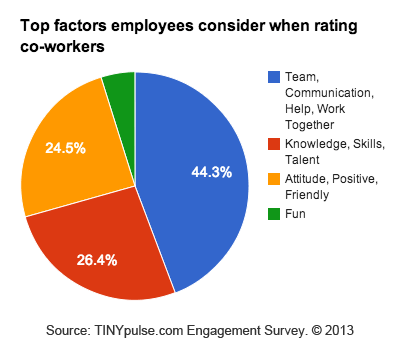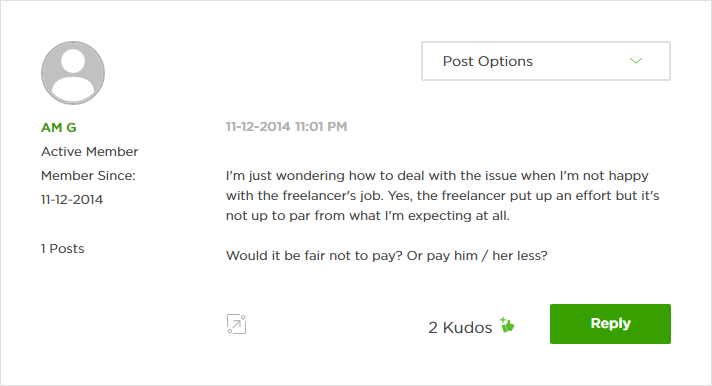6 Proven Strategies for Managing Large Teams of Freelancers

Key Takeaways
- Regular team meetings and dividing the team into smaller groups based on specializations can significantly improve communication and productivity within large teams of freelancers.
- Establishing a friendly atmosphere, giving specific instructions, and matching freelancers to projects based on their skill sets can boost the team’s performance and overall project success.
- Implementing a performance review framework is essential to track productivity and provide constructive feedback, which can lead to improved performance and increased motivation among freelancers.

Are you a good team manager? Many entrepreneurs are not. Trust me, I know… I used to be one of them.
A study from the University of Ottawa shows that 33% of business projects fail because of lack of involvement from senior management, which means that managing your team of freelancers efficiently is crucial to guarantee a better performance from your team, especially with large teams.
Mismanaging large teams of freelancers can cost you hundreds (if not thousands) of dollars, as most freelancers need the right leader to help them reach their full potential.
Fortunately for you, I took on the task of figuring out the best strategies for leading a strong, successful freelance team when I had to take this task on myself. Here’s what I discovered.
1. Schedule Team Meetings
When freelancers start working on a project, they’ll always have suggestions and updates. In order for you to be a good team manager, you must be all ears by scheduling regular meetings with your team members so they can communicate and make any necessary project adjustments. Skype and Hangouts are the most popular software tools for such meetings.
According to a Computerworld study, 87% of desktop video conferencing users feel more connected to their teams.
The meetings must be short and prolific, and all team members should participate. If you schedule progress conversations on a weekly basis, schedule 35 minutes for video calls, and 23 minutes for phone calls (the average attention spans for each). The more frequently you check in with your team, the shorter each conversation needs to be.
Meeting with small groups within the team separately is better than gathering the entire team at once. Which brings us to the next strategy…
2. Divide Your Team into Small Groups
Dividing your team into small groups by each member’s specialization is a task that simplifies communication with your team, and saves both time and rework.
Not only should you divide your team, but you also must establish connections between each group’s members. Holding frequent meetings is the best way to establish this (see above).
There are many benefits to having freelancers work together, including:
- Better teamwork between each small group’s members, making it easier to solve problems, make choices, and work together.
- An enhanced culture of creativity and collaboration towards attaining a common goal in your team.
- Expediting the work process.
3. Create a Friendly Atmosphere
Generating a pleasant atmosphere is a must-do that every business should use to boost the creativity and well-being of all teams, not just large teams.
It may seem hard for you to apply this rule to a team of freelancers as you’re probably connecting via text message and emails, instead of having physical, eye-to-eye contact. But even without in-person communication, there are still many ways to develop a strong rapport with your team members.
Take the time to develop a personal relationship with each team member. Ask about their hobbies, interests, happiness, satisfaction, and career or business goals. Appreciating each freelancer’s efforts and time by paying bonus rates for excellent work or just saying “thank you” is crucial.
Doing these simple things will make your team members passionate about working with you and they’ll consider you a good client.

The TINYpulse graph above shows how being friendly and positive is important to team satisfaction.
4. Establish a Performance Review Framework
Performance review frameworks are designed to grade freelancers according to how active and productive they are. You can establish your own performance review system, or you can download samples such as Halogen Software’s free performance review forms.
In a survey conducted by Zenger and Folkman, 92% of respondents identified with the assertion that “negative (redirecting) feedback, if delivered appropriately, is effective at improving performance.” So make sure you give your team members feedback in a constructive way. Meanwhile, recognizing the efforts of your employees is crucial. According to an HR Pundits study, 69% of employees said that they would work harder if they felt their efforts were better recognized.
5. Give Specific Instructions
While some freelancers do not satisfy their clients, often the issue is the lack and generalization of instructions by clients. When it comes to large teams of freelancers, the same rule applies. Every freelancer has to know what he or she is expected to do, especially if there are multiple freelancers working on the same project.
For example, if you hired eight freelance writers, you must give specific instructions for each writer on the type of the article (list, case study, how-to, etc.), word count, style and deadlines, so you can diversify your content and publish content regularly. Otherwise, you’ll end up getting the wrong service or asking for refunds.
Below is a post from an Upwork user who wasn’t satisfied with the work of a contractor he hired. Reading between the lines of his post, you’ll notice that the mistake was likely made on the client’s part, not the contractor’s, with a vague communication style.

Sometimes, especially in the beginning, you’ll end up unsatisfied with the freelancer’s work. The best solution in this case is to discuss why you’re unhappy with the freelancer’s work, clarify your needs and expectations, and ask the freelancer to make adjustments; however, make sure you give specific instructions before starting any project.
For more information, read: How to Get the Most out of Your Freelancers.
6. Match Freelancers to Projects
“The only way to do great work is to love what you do.” – Steve Jobs
Matching every member of your team with tasks and projects based on their skill sets will boost your project’s success, as each team member is doing something he or she loves.
Researchers at the University of Illinois at Urbana-Champaign confirmed Steve Jobs’ quote by studying 15,301 participants in a survey on job performance. This study found that employees whose passion matched their job profiles regularly performed better, helped other employees with tasks more, and had longer company tenure.
Ultimately, make sure you apply the strategies above with your team. Even though managing large teams can be difficult (let alone large teams of remote freelancers), by implementing these strategies, you will see tremendous results.
Frequently Asked Questions on Managing Large Teams of Freelancers
What are the key challenges in managing large teams of freelancers?
Managing large teams of freelancers can be challenging due to several factors. These include communication difficulties, lack of face-to-face interaction, different time zones, and varying work styles. It’s crucial to establish clear communication channels, set expectations, and build a strong team culture to overcome these challenges.
How can I effectively communicate with a large team of freelancers?
Effective communication is crucial when managing a large team of freelancers. Use project management tools and communication platforms to streamline communication. Regular updates, feedback sessions, and virtual meetings can also help keep everyone on the same page.
How can I build a strong team culture with freelancers?
Building a strong team culture with freelancers can be achieved by fostering a sense of belonging and inclusivity. Regular team meetings, recognition of good work, and opportunities for social interaction can help build a strong team culture.
How can I manage different time zones when working with freelancers?
Managing different time zones can be challenging. However, using scheduling tools, setting clear deadlines, and maintaining flexibility can help manage this issue effectively.
How can I ensure quality work from freelancers?
Ensuring quality work from freelancers involves setting clear expectations, providing constructive feedback, and maintaining open communication. Regular check-ins and reviews can also help ensure quality work.
How can I motivate a large team of freelancers?
Motivating a large team of freelancers can be achieved by recognizing their efforts, providing opportunities for growth, and maintaining a positive work environment. Regular feedback and rewards for good work can also boost motivation.
How can I handle conflicts in a large team of freelancers?
Handling conflicts involves open communication, understanding different perspectives, and finding a mutually agreeable solution. It’s important to address conflicts promptly and fairly to maintain a positive team environment.
How can I manage workload distribution among a large team of freelancers?
Workload distribution can be managed effectively by understanding each freelancer’s skills and capacities. Using project management tools can also help track workload and ensure fair distribution.
How can I build trust with a large team of freelancers?
Building trust with freelancers involves open communication, reliability, and respect. Providing feedback, recognizing good work, and maintaining a positive work environment can also help build trust.
How can I ensure the success of a large team of freelancers?
Ensuring the success of a large team of freelancers involves effective communication, clear expectations, and a strong team culture. Regular feedback, recognition of good work, and opportunities for growth can also contribute to the team’s success.
Yassir Sahnoun is a freelance writer specializing in languages, business and travel. He also helps out entrepreneurs with content strategies and writing services.
Published in
·Design·Design & UX·Illustration·Photography & Imagery·Typography·UI Design·UX·November 9, 2015
Published in
·APIs·Community·JavaScript·Mobile·Mobile Web Development·Vanilla JavaScript·December 19, 2013





